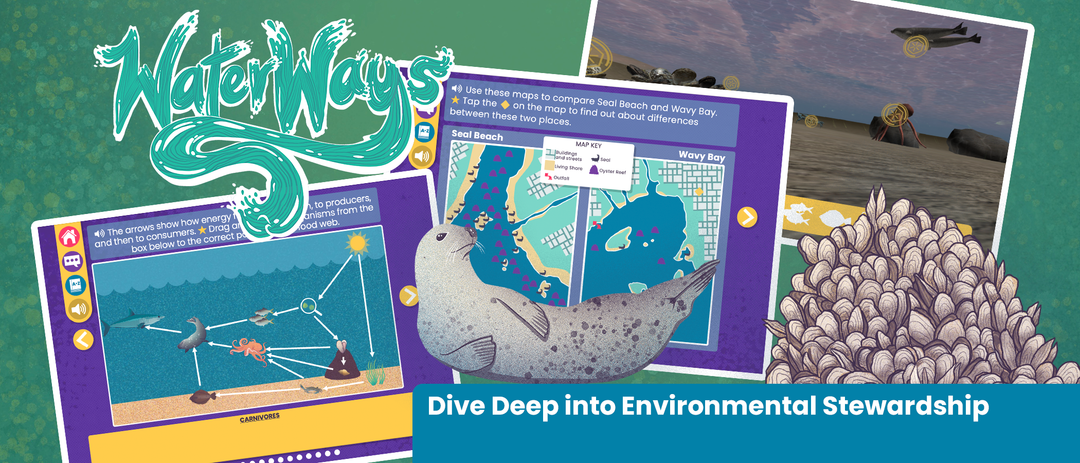Augmented reality
WaterWays - Restoring Ecosystems
Regular price$3.99
Build back a better ecosystem and help alleviate ecological problems and biodiversity destruction at Wavy Bay. Learn about the helpfulness of oyster reefs when it comes to water, flood reduction, and more before hypothesizing what they may do to bring Wavy Bay back to normal.
- Developed in collaboration with the Wildlife Conservation Society, Hudson River Park and Mount Sinai's Transdisciplinary Center for Early Environmental Exposure, with funding support from the National Institutes of Health
Restoring Ecosystems includes:
- A personalized digital science journal and an augmented reality experience, accessible by phone or browser using webVR.
- 40 minutes of interactive activities where students are scientists engaged with water science and water stewardship.
- Assessment dashboard for educators to monitor and scaffold student learning
Next Generation Science Standards:
Science Engineering Practices:
- Developing and Using Models
- Analyzing and Interpreting Data
- Constructing Explanations and Designing Solutions
- Engaging in Argument from Evidence
- Obtaining, Evaluating, and Communicating Information
Disciplinary Core Idea:
- ETS1.A Defining Engineering Problems
- ETS1.C Optimizing the Design Solutions
- ESS1.A Earth Materials and Systems
- ESS3.C Human Impacts on Earth Systems
Crosscutting Concepts:
- Systems and System Models
- Cause and Effect
- Patterns
Connections to Excellence in Environmental Education - Guidelines for Learning (K-12)
- Strand 1 (Analysis and Interpretation Skills): A, C, E, F, G
- Strand 2 (Environmental Processes and Systems): 2.1 A, B. 2.2, A. 2.3 A
- Strand 3 (Skills for Understanding and Addressing Environmental Issues): 3.1 A, B, C
- Strand 4 (Personal and Civic Responsibility): B, C


